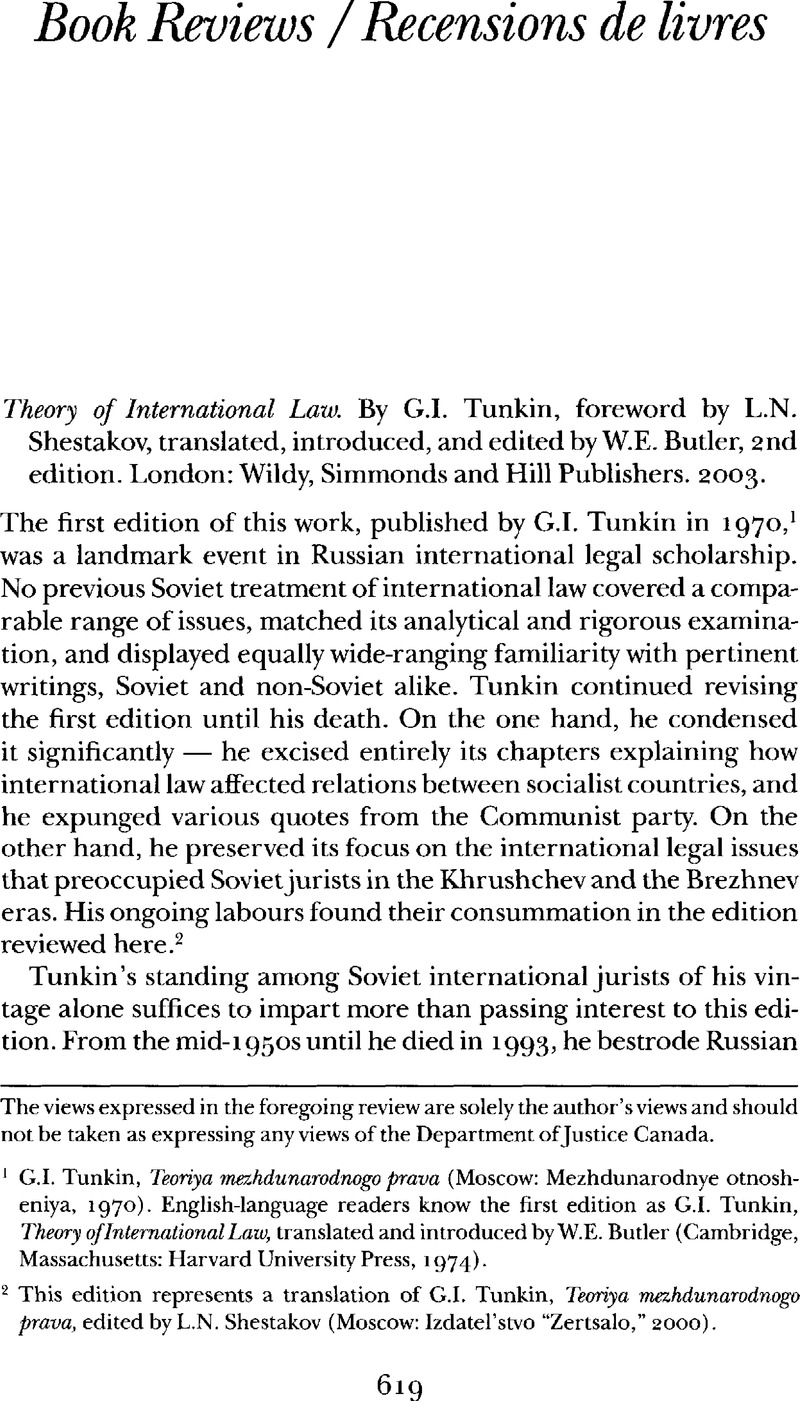No CrossRef data available.
Published online by Cambridge University Press: 09 March 2016

The views expressed in the foregoing review are solely the author’s views and should not be taken as expressing any views of the Department of Justice Canada.
1 Tunkin, G. I., Teoriya mezhdunarodnogo prava (Moscow: Mezhdunarodnye otnosh-eniya, 1970)Google Scholar. English-language readers know the first edition as Tunkin, G. I., Theory of International Law, translated and introduced by Butler, W. E. (Cambridge, Massachusetts: Harvard University Press, 1974).CrossRefGoogle Scholar
2 This edition represents a translation of Tunkin, G. I., Teoriya mezhdunarodnogo prava, edited by Shestakov, L. N. (Moscow: Izdatel’stvo “Zertsalo,” 2000).Google Scholar
3 Martens’s career and contributions to international legal scholarship are analyzed in Pustogarov, V. V., Fedor Fedorovich Martens-jurist, diplomat, 2d ed. (Moscow: Mezhdunarodnye otnosheniya, 1999)Google Scholar.
4 Tunkin’s early writings on “peaceful coexistence” include: Tunkin, G. I., “Mirnoe sosuchestvovanie i mezhdunarodnoe pravo” (1956) 7 Sovetskoe gosudarstovo i pravo 3 Google Scholar; Tunkin, G. I., Osnovy sovremennogo mezhdunarodnogo prava: uchebnoe posobie (Moscow: Vysshaya partiynaya shkola pri TsK KPSS, 1956)Google Scholar; and Tunkin, G. I., “Coexistence and International Law” (1958) XCV Recueil des cours 1 Google Scholar. He was not the only Soviet international jurist who advanced theories of “peaceful coexistence” from the mid-1950s: Meissner, B., “Die Entwicklung der sowjetischen Völkerrechtslehre,” in Meissner, B., Sowjetunion und Völkerrecht IC/TJ bis 1962 (Cologne: Verlag Wissenschaft und Politik, 1963) 52 at 57 ifGoogle Scholar.
5 Tunkin, G. I., Theory of International Law (London: Wildy, Simmonds and Hill Publishers, 2003) at xix-xx.Google Scholar
6 Myles, E., “‘Humanity,’ ‘Civilization’ and the ‘International Community’ in the Late Imperial Russian Mirror: Three Ideas ’Topical for Our Days’” (2002) 4(2) J. Hist. Intl. L. 310 passim.CrossRefGoogle Scholar